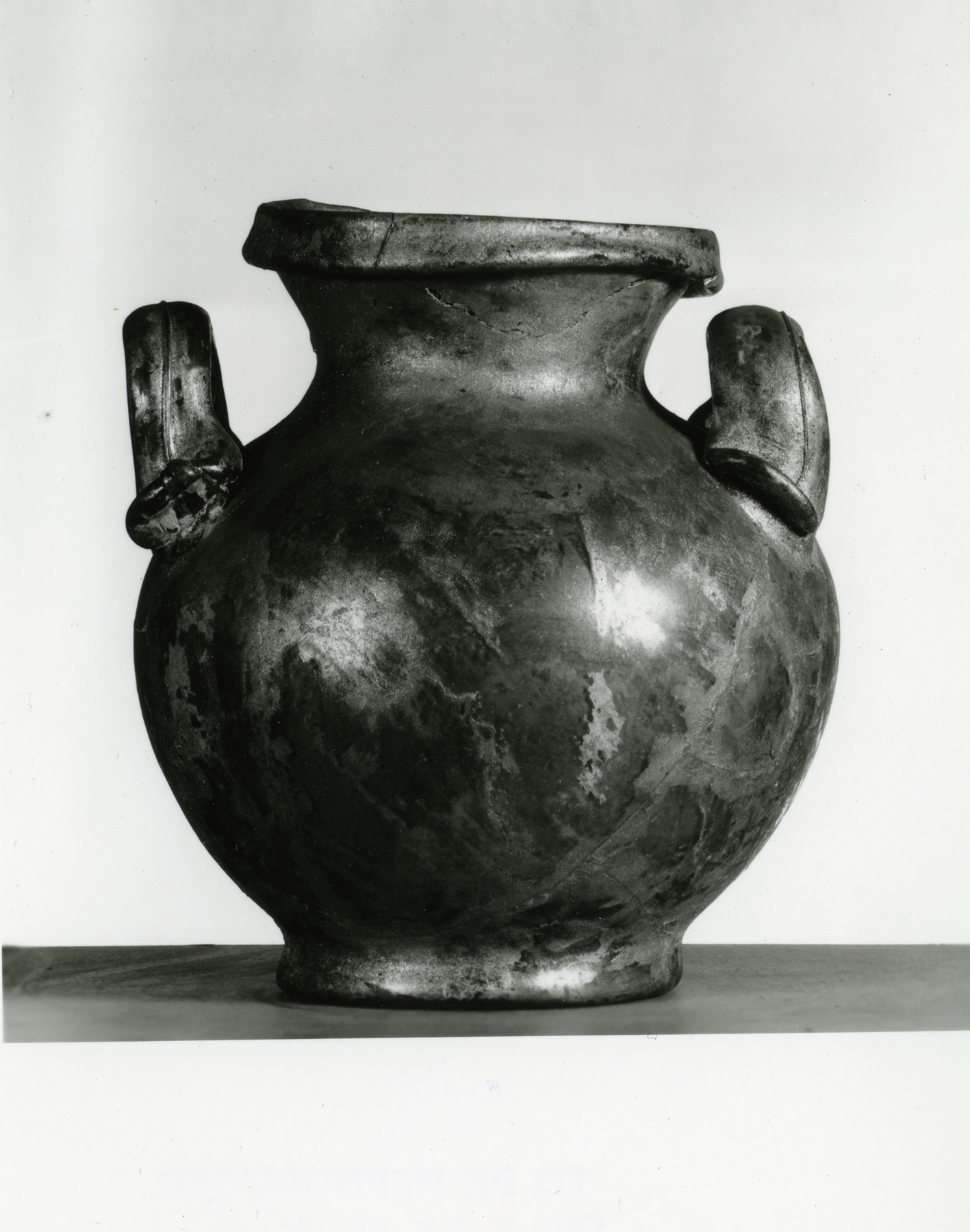Funerary Urn
(Roman Empire )
This transparent blue-green blown glass funerary urn sits on a flat base and is globular in shape. The two u-shaped handles were separately created and applied using the blown glass technique. The jar would have once contained cremated human remains and been covered by a lid in its original funerary context. Vessels of this shape, commonly appearing from the middle of the first through the second century CE, were especially popular throughout Italy and the Western Roman Provinces such as France. Funerary urns could be made in different shapes and from various materials: marble or other stone, metal, clay, or glass. In the 1600s, antiquarian interest in Roman funerary practices created a demand for such urns, particularly for examples in stone inscribed with the name of the deceased.
Provenance
Provenance (from the French provenir, 'to come from/forth') is the chronology of the ownership, custody, or location of a historical object. Learn more about provenance at the Walters.
Don Marcello Massarenti Collection, Rome [date and mode of acquisition unknown]; Henry Walters, Baltimore, 1902, by purchase; Walters Art Museum, 1931, by bequest.
Exhibitions
| 1982 | 3000 Years of Glass: Treasures from The Walters Art Gallery. The Walters Art Gallery, Baltimore. |
Geographies
Italy, Rome (Place of Origin)
Measurements
H: 10 13/16 × W: 9 1/16 × W: 9 1/16 in. (27.5 × 23 × 23 cm)
Credit Line
Acquired by Henry Walters with the Massarenti Collection, 1902
Location in Museum
Accession Number
In libraries, galleries, museums, and archives, an accession number is a unique identifier assigned to each object in the collection.
In libraries, galleries, museums, and archives, an accession number is a unique identifier assigned to each object in the collection.
47.221


